Small playroom ideas – 11 ways to merge fun and functionality in this tiny space
With our small playroom ideas, pack smart storage and fun details into even the most compact of spaces

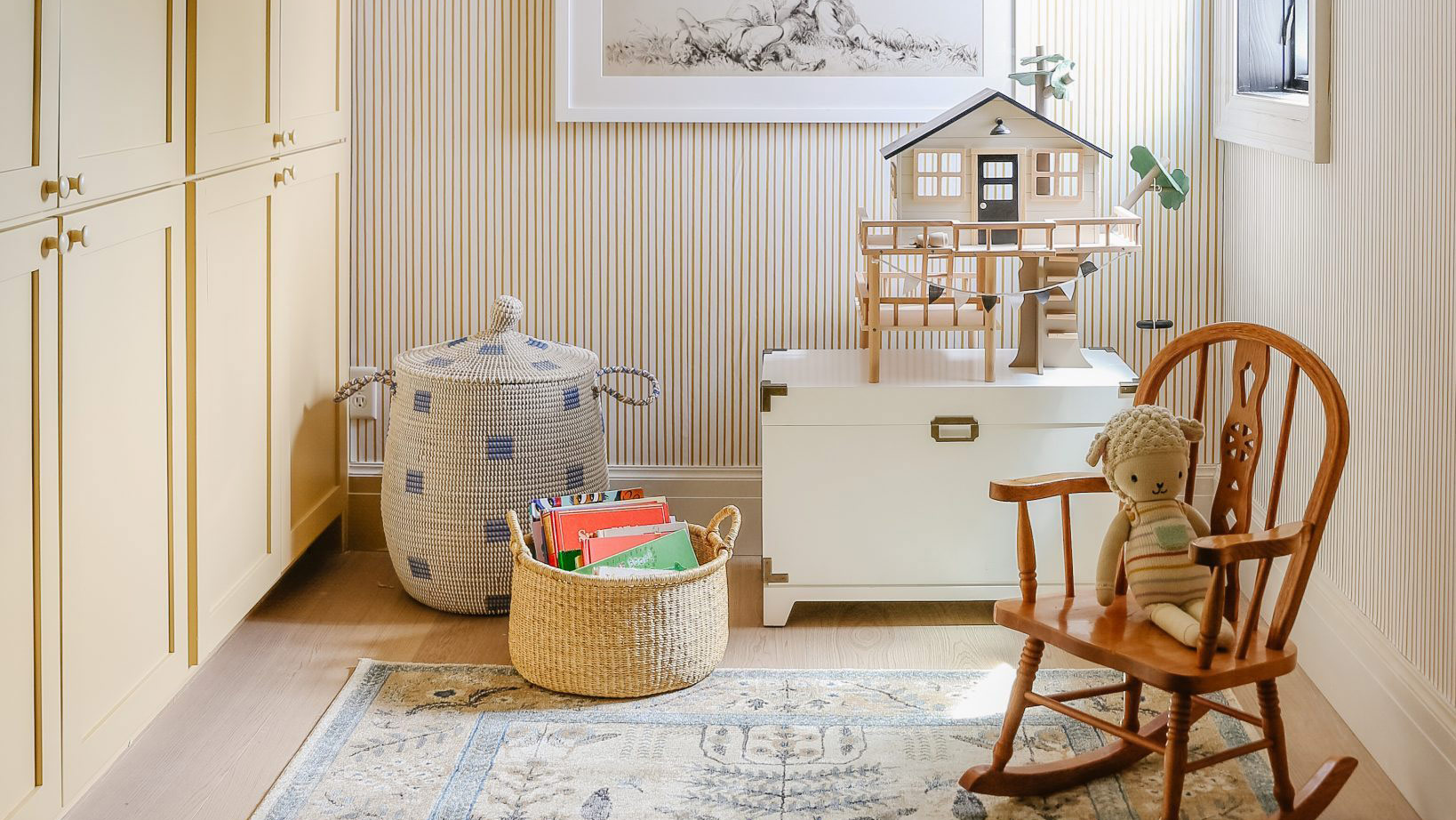
Not every home has space for even a small playroom. More often than not, secondary rooms such as the study, the attic, or the guest rooms work double duty. But if you're considering if you can make one work, you might not need as big of a room as you might imagine.
A playroom can sometimes be squeezed into a spare room, a loft, a hallway or even as part of a larger room. However, regardless of the size, you'll want it to be somewhere kids can enjoy using, while also keeping it well organized.
In these tiny spaces, adding efficient storage, furniture and decor is essential, so the space is both utilitarian and enjoyable. We've pulled together useful playroom ideas and tips to help you get through the process of setting up this very important space when space isn't on your side.

Aditi is a homes writer and editor with several years of experience. Her articles, backed by expert insights, offer suggestions aimed at helping readers make the best home design choices. Each piece presents latest ideas, information and trends to her readers. For this piece, she spoke to top interior designers for their advice on making small playrooms work.
11 small playroom ideas created by interior designers
When it comes to positioning a small playroom, location matters, not only for keeping an eye on the kids, but maintaining the peace in your home.
'A playroom with adjacency to public areas of the home is great when it comes to comfort and convenience, but they can get noisy at times and be difficult to keep tidy,' says Reena of Reena Sotropa In House Design. 'It is a huge advantage if the room has a door or can be retrofit with doors that can be closed when company comes.'
'Play spaces should ideally be within view and at least earshot of the kitchen or other areas where parents or caregivers spend their day,' Reena tells us. 'If playrooms are too tucked away, children can feel isolated and supervision is inconvenient. In these cases, either the children only use the playroom when an adult is present or it becomes a toy storage room and, inevitably, the play space (and the chaos) will gravitate back into the main living spaces.'
1. Choose adaptable furniture
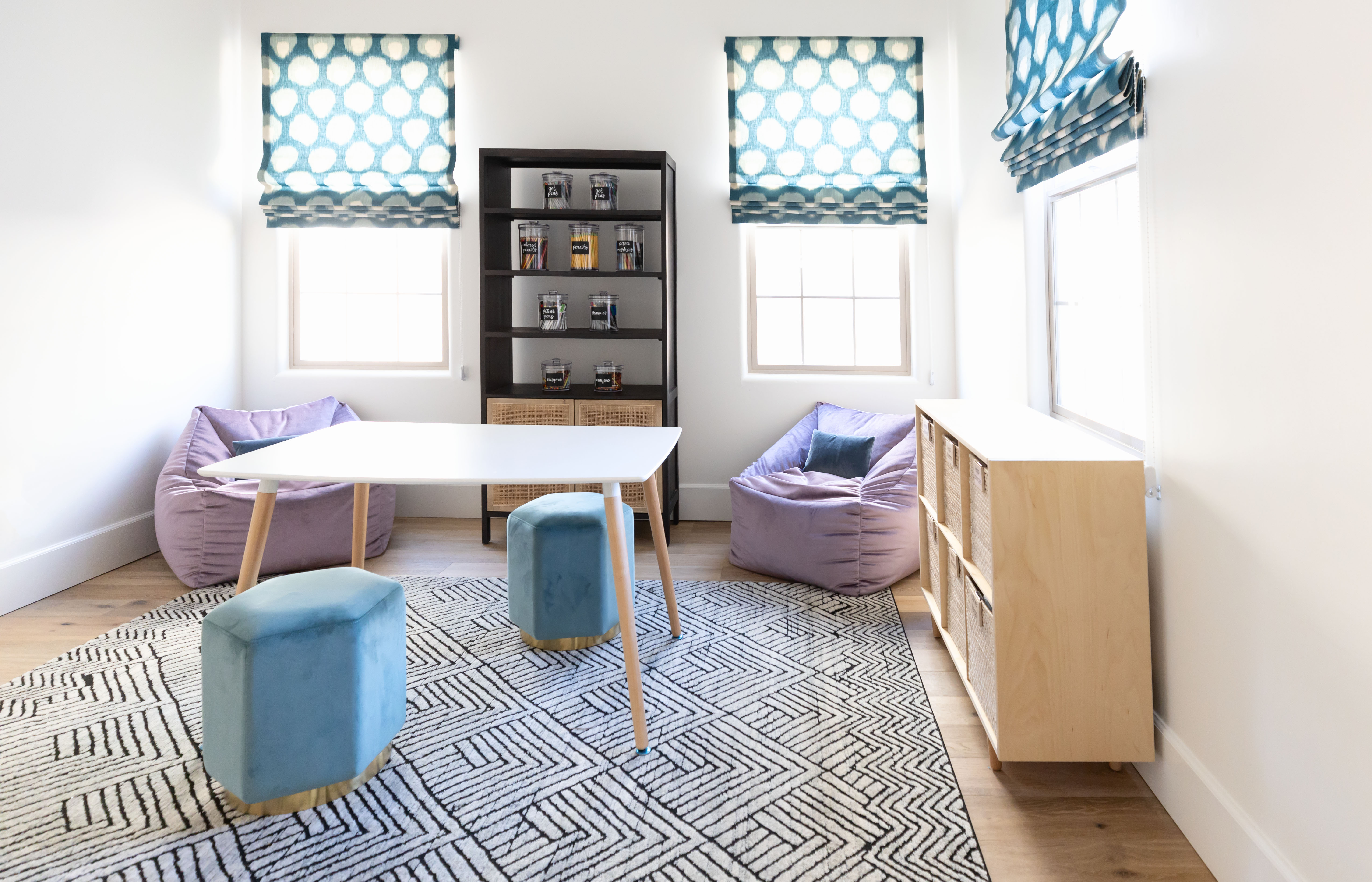
When space is in short supply, easy to move furniture will give your playroom maximum flexibility, ensuring you can clear the space for games and activities that need it.
The Livingetc newsletters are your inside source for what’s shaping interiors now - and what’s next. Discover trend forecasts, smart style ideas, and curated shopping inspiration that brings design to life. Subscribe today and stay ahead of the curve.
'This playroom was designed to ignite creativity and fun while being playful and purposeful,' says Lauren Lerner, founder and principal designer of Living with Lolo. 'We added bean bag poufs to provide a kids' reading corner and comfortable ottomans at a work table for art projects.'
2. Convert a dormer area into a playroom

There are certain small spaces in a home that lend themselves to working for an area like a playroom, and as this design goes to show, a dormer in your home could be the perfect proportions for a micro space for the kid's hobbies.
'Our client wanted a space where the kids could read, do homework, art, relax and play games,' says Jessica Davis, principal designer of JL Design. 'This dormer area was a perfect spot for a deep built-in lounge seat, built-in shelves, kids desk and fun pops of green.'
3. Or perhaps an attic
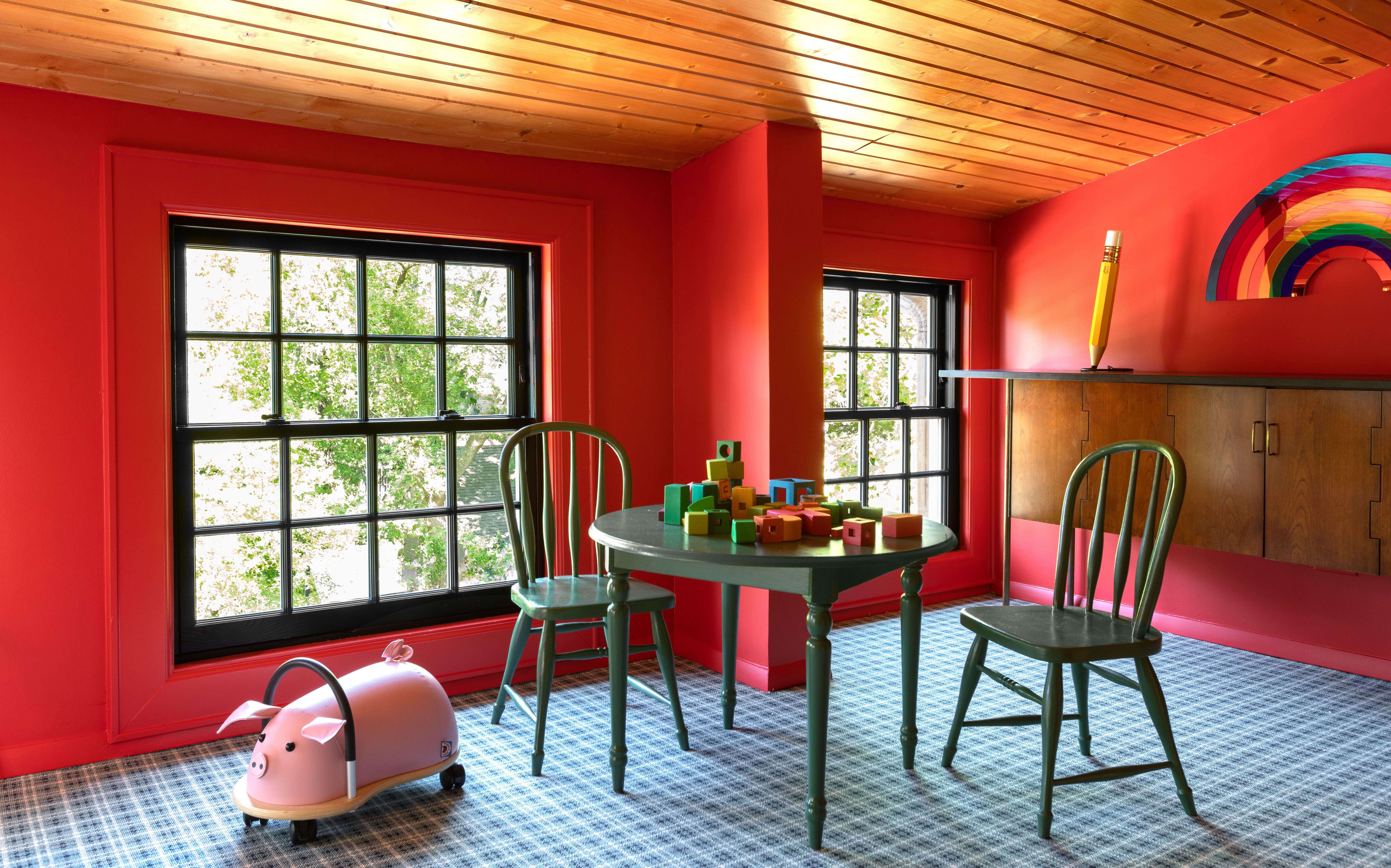
As long as kids have a designated space to play, read, and daydream, they're happy and satisfied, even if you've eked out a corner for them in the attic.Make the most of this room and consider the child's preferences. Talk to them about what they'd like to do in this space, how they'd like to organize the playroom, and then design accordingly. It's certainly a good thing for any parent-child relationship.
'The third-floor attic space was converted into a playroom for our client’s two children,' says Mark Lavender, principal designer at M. Lavender Interiors. 'We took advantage of this area to provide a quiet place for reading or looking out the window for the parents while their kids played in the rest of the space. It also serves as a place of respite from the hustle and bustle of the house if the rest of the family is downstairs. For this room, we kept the primary color scheme in place and accented the room with shades of green. The pine paneled ceiling with the strawberry red paint color brought back great memories of summer camp.'
One important thing to keep in mind, however, is that the children's play area shouldn't be too far from sight. 'It is tempting for parents who want to “contain the chaos” to relocate toys and play spaces into the basement or attic where there is often plenty of space to run,' says Reena. 'However, this can be a mistake, especially for younger children. Make sure they are always at a visible distance, and you have access to them at all times.'
4. Add a seating nook for kids

Adding tables and chairs will help convert this playroom into one that serves more functions than one. It is here that the child can spend hours coloring, writing, playing tea-time, or more. A round table like this also encourages interaction between parent and child, or the child with his friends. This furniture piece is ideal for shared bedrooms.
This can also inspire kids and their friends to study and read together. Remember, you don't have to spend big bucks to make this happen. Children grow up fast and the small, child-size furniture will soon become redundant. Consider shopping secondhand, and keep an eye out for durable fabric, as you can be sure that the chairs will get stained or torn at some point.
One of the most forgiving fabrics is ultra suede. It may look delicate but it’s one of the most durable and cleanable coverings.
5. Think about your storage
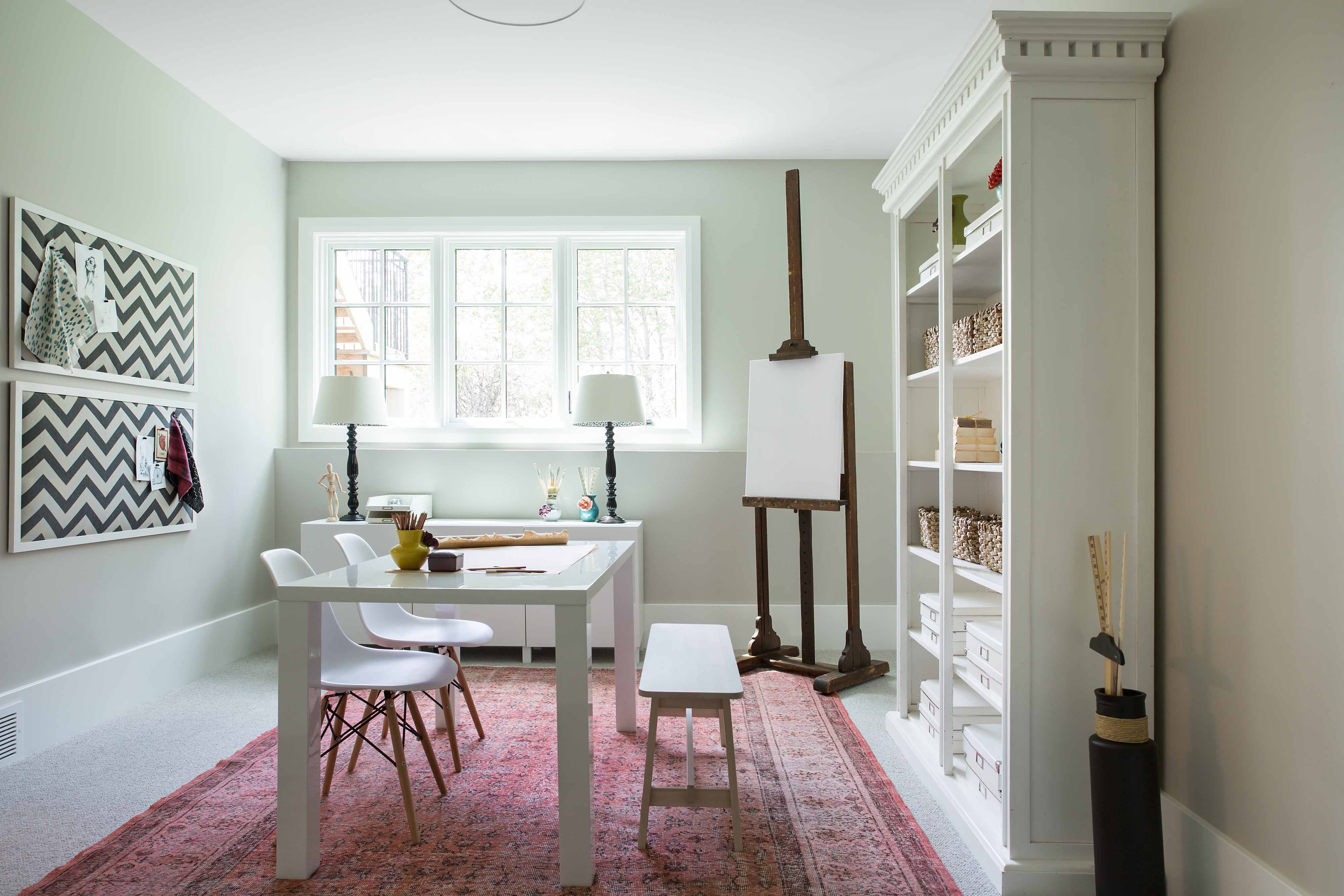
For useful playroom storage ideas, add fun storage baskets to keep all the chaos at bay. This will teach the kids that post play hour, everything needs to go back in an orderly fashion, inside the storage units in the room.
'The level of customization and budget would likely differ for a one-child family versus a family with more children who would use the space for several years longer,' says Reena. 'For example, if the space will only function as a playroom for a few years, you would likely not want to invest in custom, built-in toy storage, but rather purchase inexpensive storage solutions that can be easily swapped out as the children grow and their needs change.'
6. Turn a walk-in closet into a playroom

If you're fearful that your child's toys and books will take over your tiny apartment, you can contain it all within a walk-in closet. While it's compact, it gives your child a dedicated space to play and offers toy storage.
In this design, a small nook has been transformed into a micro playroom. 'For the intrepid explorer, a walk-in closet has been re-imagined into a private nook lined with tree wallpaper,' says Benni Amadi, founder of Benni Amadi Interiors. 'Book ledges on two of its walls for a forest-themed reading hideaway illuminated by a string of light,'
7. Create a hideaway spot under the stairs

A creative, interesting room can encourage children to explore their imagination. It can be an entire room, but it can also be a corner of a narrow hallway or an area under the stairs.
Consider adding a ladder that leads to a fortress tower in the child's bedroom or create a Harry Potter-esque room under the stairs to allow kids to have all the fun, indoors.
'Don’t overlook tiny spaces; kids love spending time in small, cozy spaces,' says Reena. 'We often suggest our clients take advantage of the small and oddly shaped areas tucked under a stairwell or within the eaves to create a fun playhouse for little ones or a reading nook for older children.'
8. Install a tent for some dedicated kid's space

For imaginative play or as a peaceful hideaway, tents speak to the children in all of us. Of course, the conical tent design has been around for many years, but its appeal hasn't faded, especially for kid's room ideas. If your home's layout doesn't have space for a playroom, you can simply place a tent next to the entrance, in the living room, or dining for impromptu playtime.
A tent offers itself up as a flexible and moveable 'playroom' feature and can be placed in any part of the house, indoors or outdoors. The market even has quick and easy assemble tepee designs, so once the child is done playing with it, they can be discarded or donated without you feeling the pain.
9. Merge the home office and playroom
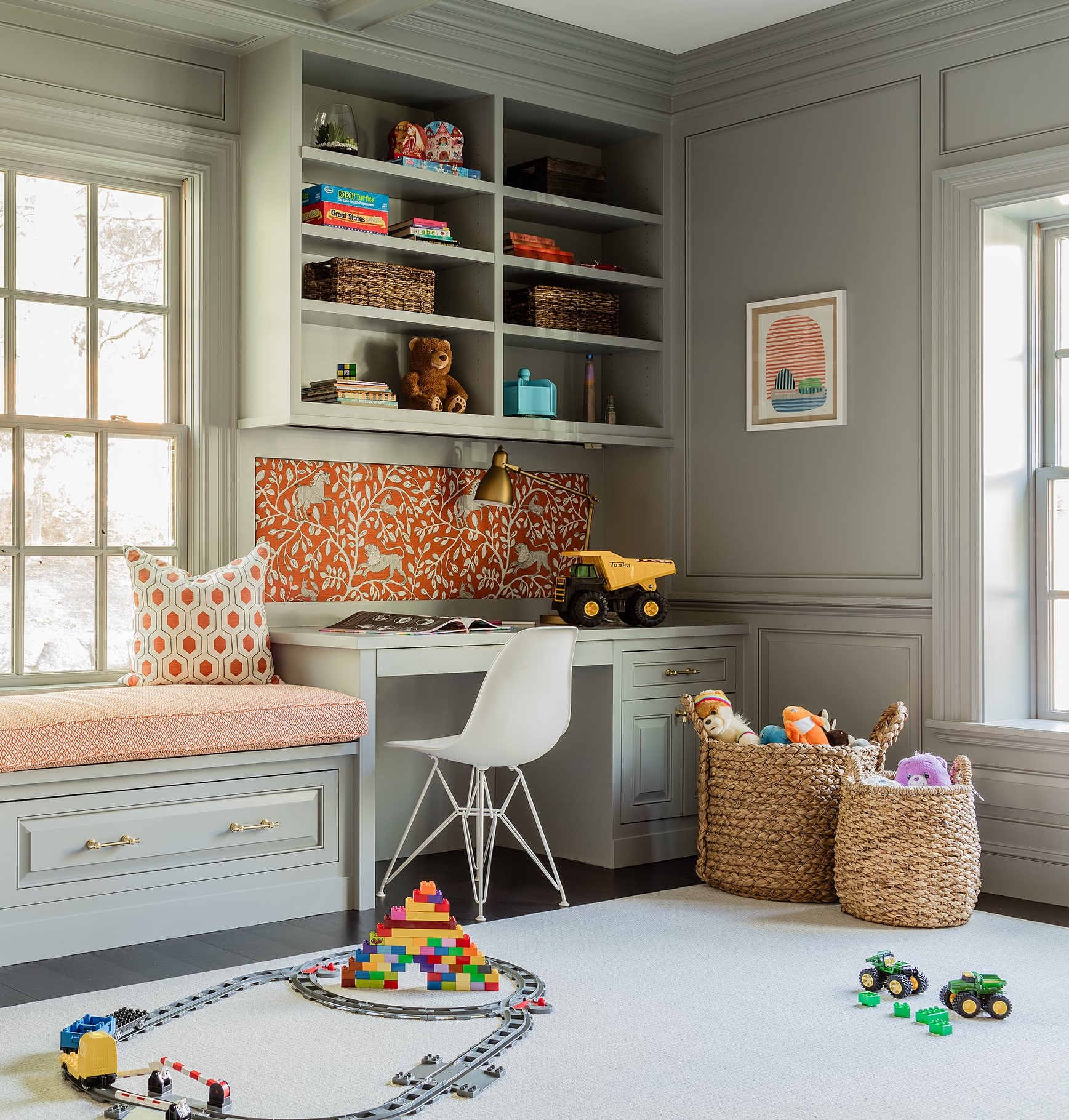
If you're merging a home office with a playroom, make sure there are appropriate surfaces for all imaginations and uses. A table for reading, homework, and activities is essential but also leave ample floor space for freeform play. When it comes to floors in a playroom, carpets can provide a comfortable surface to lie on but can get dirty quickly. Consider area rugs rather than carpets since they are easier to replace and wash.
One important factor to consider is that the existing finishes are durable, comfortable, and safe for play. 'The walls and floors in a playroom experience a lot of wear and tear,' says Reena. 'Walls that are finished in a durable wallcovering or wainscoting not only look great but would be ideal for a playroom conversion. Flooring is also a very important consideration. Durability is key, but children, especially little ones, spend a lot of time playing on the floor, so comfort is also important. This can be achieved inexpensively with area carpets or interlocking foam play mats.'
10. Bring in bright-toned furniture for a whimsical vibe
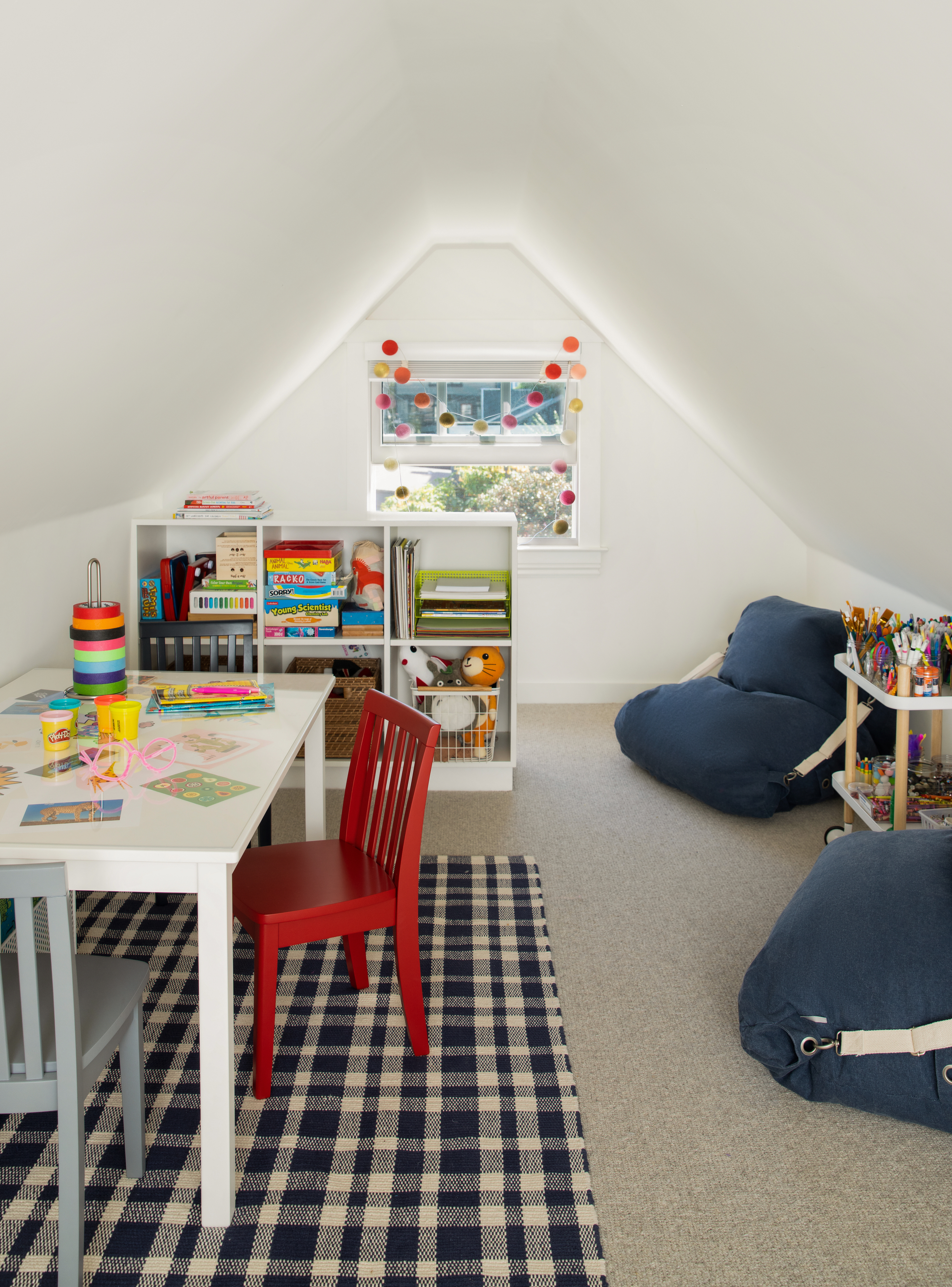
Experiment with fun furniture, and bright colors and create an interesting landscape in the child's playroom. Think of interesting shapes when it comes to kids' desks, and go all out in this small, compact yet very important area.
'Because playrooms are a place of fun and whimsy, we encourage mixing furnishing colors, and displaying art and accessories, in unexpected ways,' says Emilie Munroe, founder of Studio Munroe. 'Here, the crayola red desk chair brings an element of brightness to the navy and white color scheme. Add a pom pom garland draped on the window frame to encourage creativity and fun.'
11. Add built-in shelving along a wall for storage
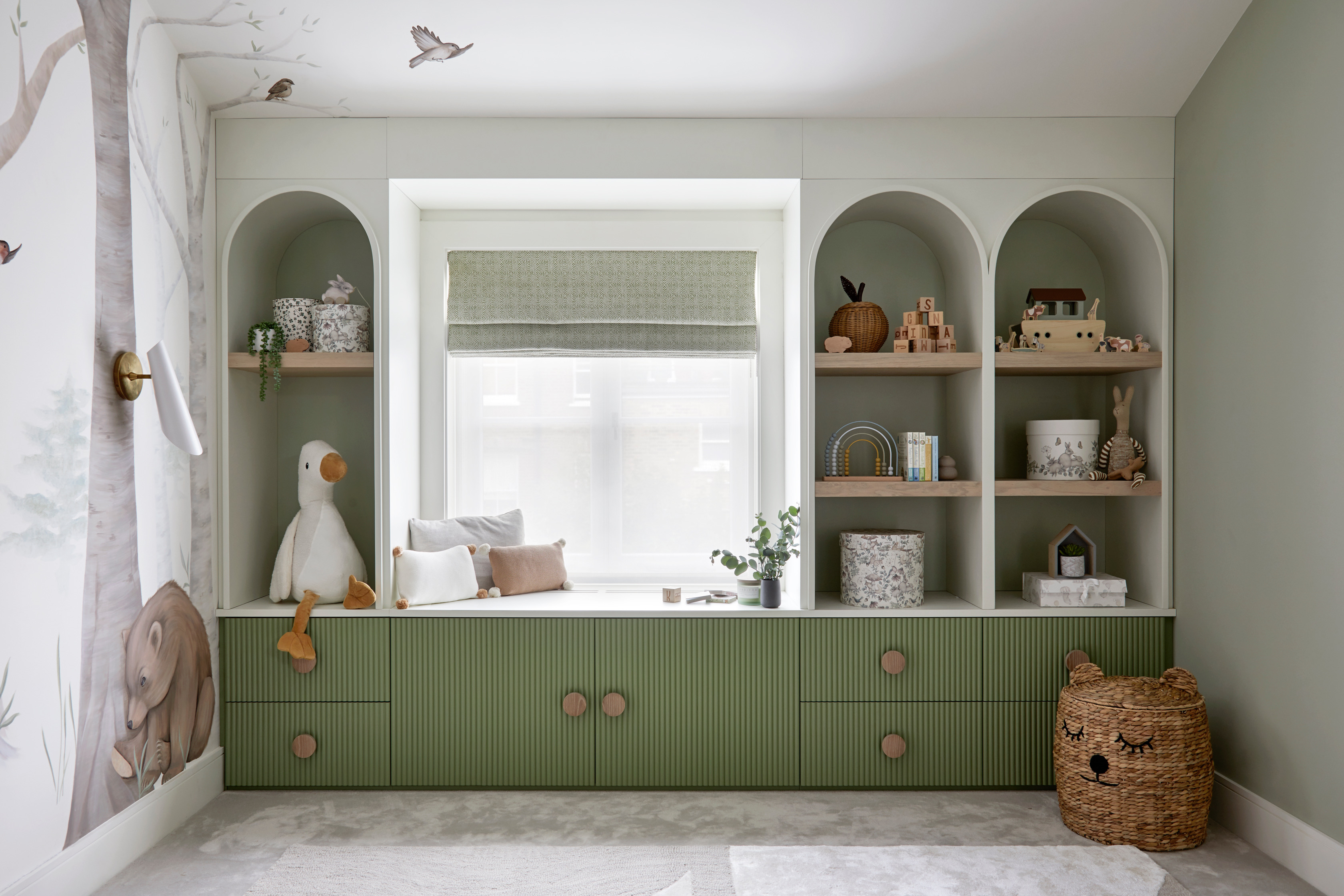
‘This custom-built shelving was designed as a statement piece of a woodland-inspired nursery in St.John’s Wood, London,' says Joanna Landais, founder, of Eklektik Studio.
'Strategically curved columns soften the sloped ceiling giving the room additional height whilst framing the generous window,' Joanna adds. 'A mixture of green finishes, oak textures, and clad fronts all create an eye-catching feature whilst providing ample storage for children’s toys, books, and treasured possessions.'
What should be in the playroom?
For most city dwellers, it might not be possible to have an altogether separate playroom for the kids but there are some essentials this space should have.
Make sure you include enough storage solutions so that the space doesn't become a mess. Add a table and chair so the kid can spend quality time reading, writing, and coloring here. Personalize the space with their artworks; if you do decide to go all the way, adding chalkboard paint for them to create instant doodles may not be a bad idea.
Most kids spend a lot of time on the floor so look for comfortable playroom or bedroom rug ideas. If you still have the space and dedication to decorate this area, then add little whimsical elements like a swing, a hammock, or a tent.

Aditi Sharma Maheshwari started her career at The Address (The Times of India), a tabloid on interiors and art. She wrote profiles of Indian artists, designers, and architects, and covered inspiring houses and commercial properties. After four years, she moved to ELLE DECOR as a senior features writer, where she contributed to the magazine and website, and also worked alongside the events team on India Design ID — the brand’s 10-day, annual design show. She wrote across topics: from designer interviews, and house tours, to new product launches, shopping pages, and reviews. After three years, she was hired as the senior editor at Houzz. The website content focused on practical advice on decorating the home and making design feel more approachable. She created fresh series on budget buys, design hacks, and DIYs, all backed with expert advice. Equipped with sizable knowledge of the industry and with a good network, she moved to Architectural Digest (Conde Nast) as the digital editor. The publication's focus was on high-end design, and her content highlighted A-listers, starchitects, and high-concept products, all customized for an audience that loves and invests in luxury. After a two-year stint, she moved to the UK and was hired at Livingetc as a design editor. She now freelances for a variety of interiors publications.